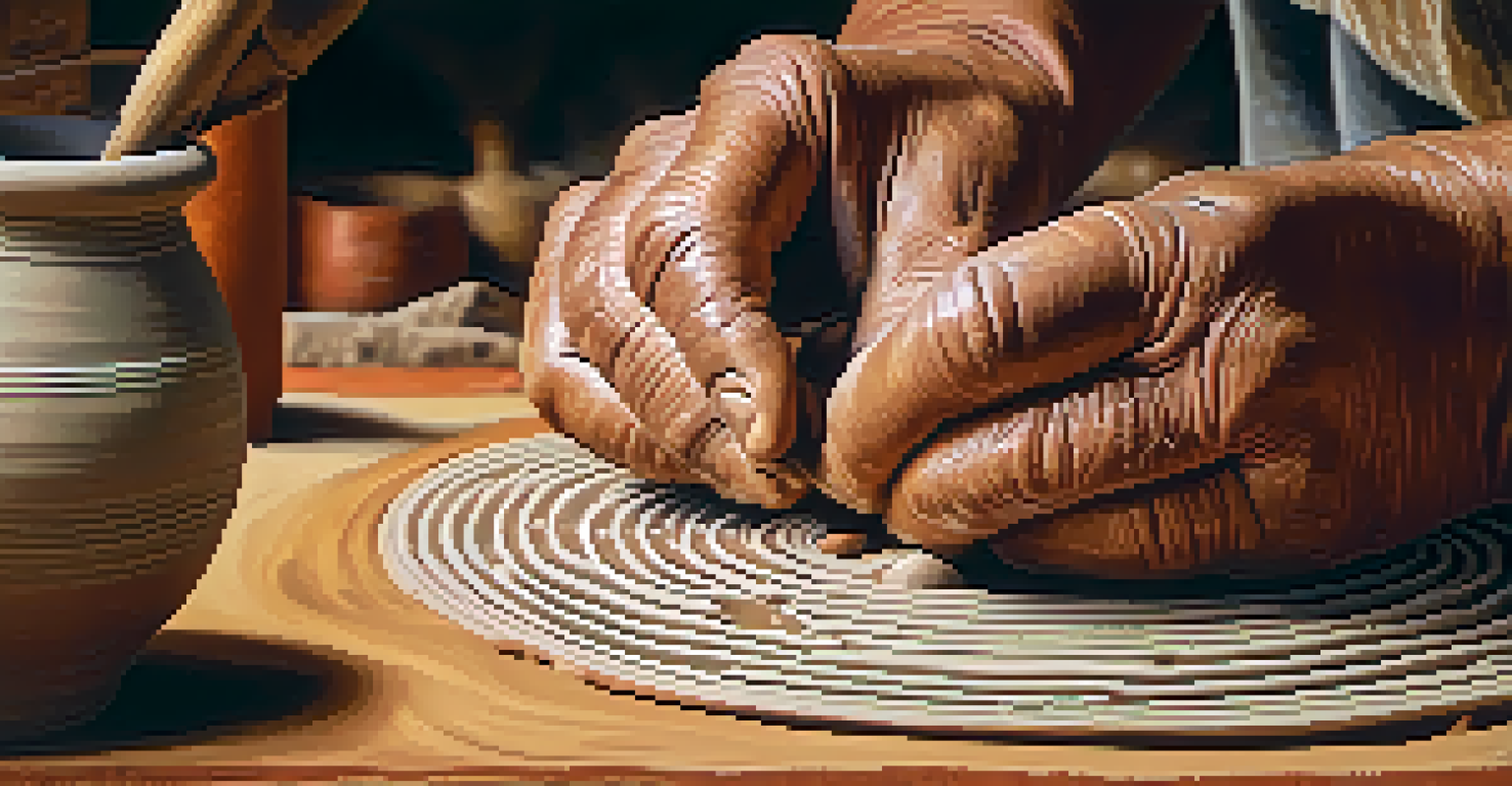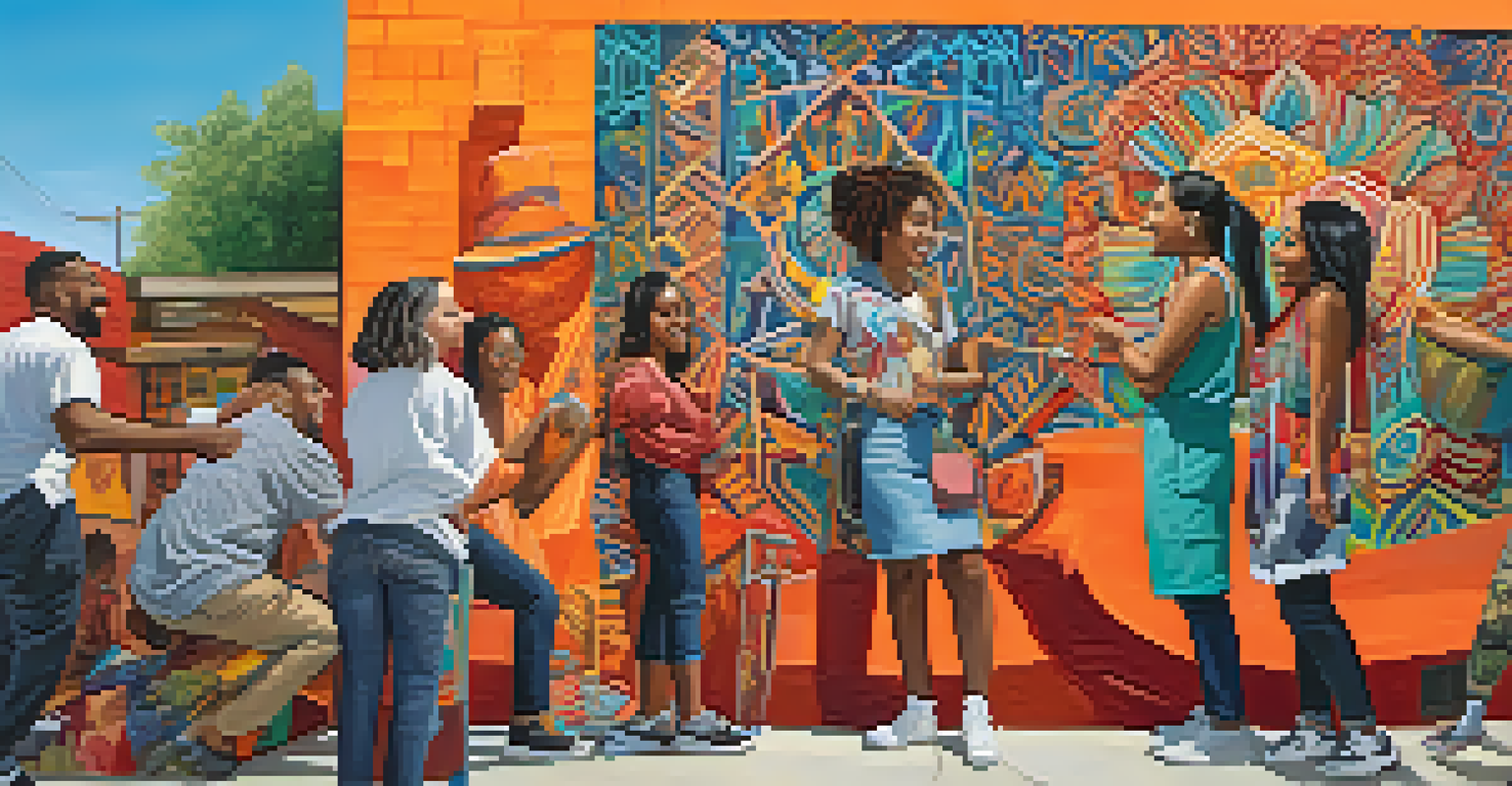The Fine Line: Art, Inspiration, and Cultural Appropriation

Understanding Art and Its Cultural Context
Art serves as a mirror reflecting cultural values, beliefs, and histories. Each piece of art carries with it a story, often rooted in the traditions of a particular community. Understanding this context is crucial because it shapes the way we perceive and appreciate the artwork.
Art is the most beautiful of all lies; it is a truth that cannot be seen but can only be felt.
When we view art, we must consider who created it and the cultural significance behind it. This understanding fosters deeper connections and appreciation, allowing us to see beyond the surface. Without this lens, we risk oversimplifying or misinterpreting the intent and message of the artist.
For instance, indigenous art often holds sacred meanings tied to spirituality and heritage. Recognizing these elements can enrich our experience and respect for the culture, highlighting the importance of context in the realm of art.
The Role of Inspiration in Artistic Expression
Inspiration is a fundamental aspect of creativity, driving artists to explore new ideas and forms. Artists often draw from various sources, including their personal experiences and the world around them, which can lead to innovative expressions. This blending of influences is what makes art dynamic and ever-evolving.

However, inspiration can sometimes tread a fine line. While it’s natural to be influenced by different cultures, it’s essential to approach this process with sensitivity and respect. The difference between appreciating a culture and appropriating it often lies in the intent and awareness of the artist.
Art Reflects Cultural Context
Understanding the cultural background of art enhances our appreciation and prevents misinterpretation.
For example, a musician might incorporate sounds from diverse genres to create something unique. If done thoughtfully, this can celebrate cultural diversity; if not, it may inadvertently erase the original context and significance of those sounds.
Defining Cultural Appropriation in Art
Cultural appropriation occurs when elements of one culture are taken and used by another, often without permission or respect. This can lead to misrepresentation and exploitation of the marginalized culture. It's a topic that has ignited significant debate within the art community, raising questions about ownership and respect.
Culture is the widening of the mind and of the spirit.
It's important to distinguish between cultural exchange—where mutual respect and understanding are present—and cultural appropriation. The former can foster appreciation and dialogue, while the latter can reinforce stereotypes and perpetuate inequality. Understanding this distinction is vital for artists and consumers alike.
A classic example of appropriation is seen in fashion, where designers use traditional garments from other cultures without acknowledgment. This not only disrespects the original creators but also commodifies their cultural symbols for profit.
The Impact of Cultural Appropriation on Communities
Cultural appropriation can have profound effects on the communities being appropriated. When cultural symbols are used without understanding, it can lead to feelings of erasure and disenfranchisement among the original culture's members. This can perpetuate a cycle of marginalization and misunderstanding.
Moreover, when art from a marginalized community is commercialized by those outside of it, the original context is often lost. This raises ethical concerns about who benefits from the art and whether the voices of the original creators are being heard and valued.
Cultural Appropriation vs. Exchange
Distinguishing between cultural appropriation and cultural exchange is crucial for fostering respect and understanding in the art community.
For example, when traditional crafts are mass-produced for profit, the cultural significance and the artisans behind the work are often overlooked. This not only undermines the value of the craft but also disconnects it from its roots.
Navigating the Fine Line: Best Practices for Artists
Artists can navigate the delicate balance between inspiration and appropriation by engaging in thoughtful practices. First and foremost, they should educate themselves about the cultures they draw from, understanding the significance of specific symbols and practices. This knowledge can guide their creative process and ensure respect for the original culture.
Collaboration with artists from the culture being represented can also enhance authenticity and foster mutual respect. By working together, artists can create pieces that honor the original context while blending influences in a meaningful way.
Additionally, being open to feedback and criticism from those within the culture can help artists grow. This dialogue can lead to more informed and respectful artistic expressions that celebrate diversity rather than exploit it.
The Audience’s Role in Art Appreciation
As consumers of art, we play a crucial role in shaping the conversation around cultural appropriation. Being mindful of the art we support and the stories we choose to amplify can help create a more inclusive art community. This means recognizing the origins of the art and understanding the cultural narratives behind it.
Engaging critically with art also means being aware of the socio-political contexts in which it exists. We should ask ourselves questions like: Who benefits from this artwork? Are the voices of the original creators being acknowledged?
Audience Impact on Art Appreciation
The audience plays a vital role in supporting art that acknowledges its cultural origins and promotes inclusivity.
By actively participating in these discussions, audiences can influence how art is created and shared. This awareness can empower marginalized communities and encourage a more equitable representation of cultures in the art world.
Celebrating Cultural Exchange Through Art
Despite the complexities surrounding cultural appropriation, art can also serve as a powerful medium for cultural exchange. When approached with respect and understanding, artists can celebrate and honor the traditions of different cultures, fostering appreciation and collaboration. This exchange can lead to beautiful and innovative works that reflect our shared humanity.
Art festivals, exhibitions, and collaborative projects can provide platforms for diverse voices, encouraging dialogue and understanding. These spaces allow cultures to share their stories and experiences, creating a richer tapestry of artistic expression.

Ultimately, by celebrating cultural exchange, we can create a more inclusive art world that honors its diverse roots. It’s about finding common ground and recognizing that art has the potential to unite us in our differences, rather than divide us.